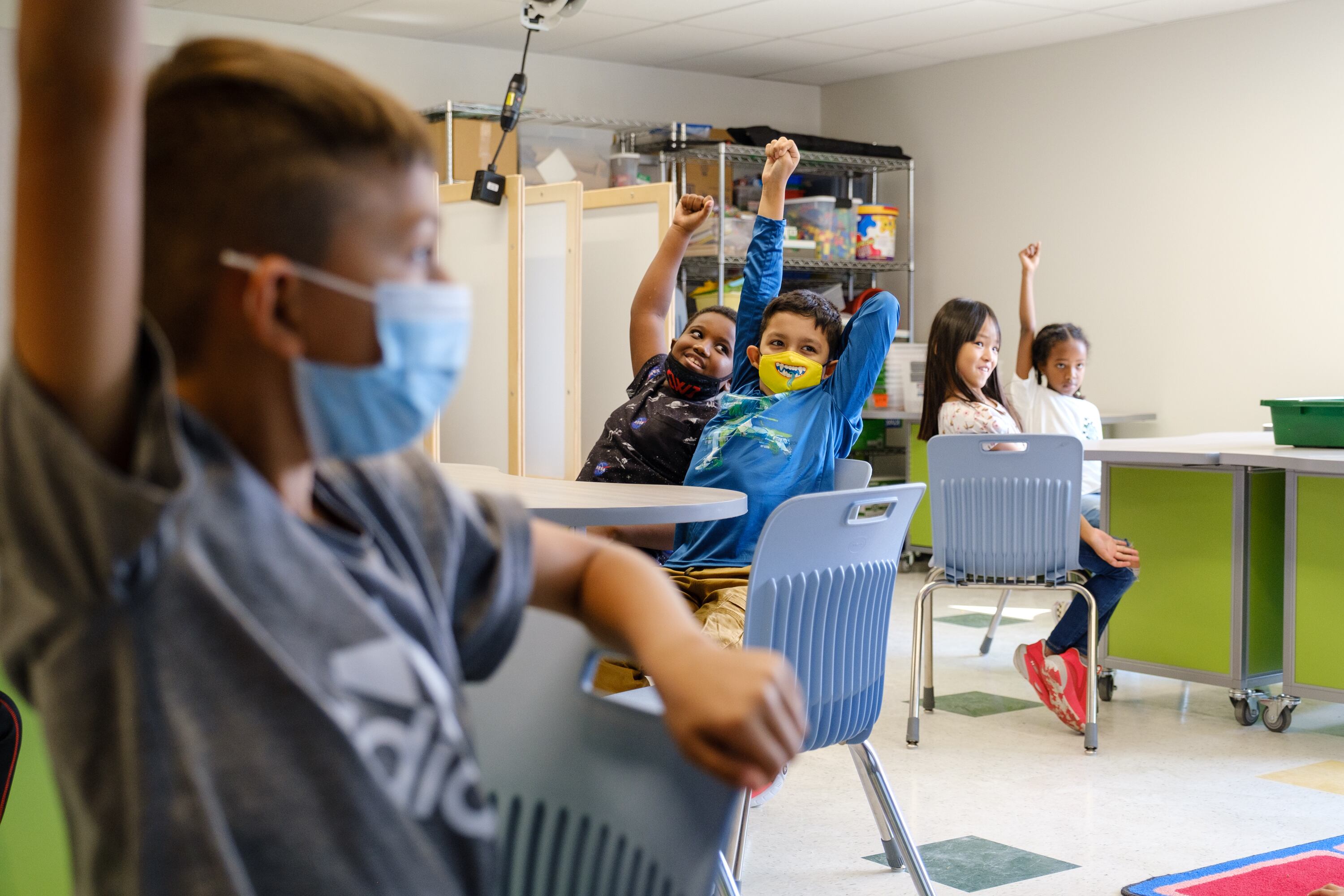Schools should only mandate masks when COVID cases and hospitalizations are high, the Centers for Disease Control and Prevention recommended Friday, in a shift that means most U.S. schools now have the agency’s OK to go without masks.
The move is the first major change in national guidance on masks in schools since last summer, and follows decisions by many states and districts to lift mask mandates in recent weeks. Still, many schools have continued to require masks for students and staff, and the CDC’s shift could pave the way for further changes.
The rules appear to be an attempt by federal officials to thread the needle between increasing political pressure to return to “normal” and the fact that COVID-19 still represents a threat, particularly in parts of the country where vaccination rates are low.
“Because children are relatively at lower risk for severe illness, schools can be safe places for children. So for that reason, we’re recommending that schools use the same guidance that we are recommending in general community settings,” CDC epidemiologist Greta Massetti said Friday.
Specifically, the new CDC rules say if new COVID cases and hospitalizations are low or moderate, and hospitals aren’t overburdened in a community, then mask mandates aren’t necessary. About 70% of Americans live in parts of the country where those metrics are now low or moderate, the agency says. (See how the CDC categorizes your county’s COVID level here.)
When COVID cases and hospitalizations are high, schools should still require masks, the CDC recommends.
The country’s two largest teachers unions, which have often pushed for more safety measures in schools, had mixed reactions Friday. The CDC’s guidelines got a thumbs up from the American Federation of Teachers but a tepid reaction from the National Education Association.
“While the NEA is encouraged by the new guidance, local governments must bring educators to the table with our in-school experience when determining how to keep school communities safe,” said President Becky Pringle. Translation: The NEA wants local unions to still have a say over safety rules, including masking.
About half of the country’s largest 500 school districts currently require masks, according to the tracking site Burbio, including New York City, Chicago, and Los Angeles. That’s a substantial dip from the beginning of the month, when more than 60% of those districts had mask mandates. Only two states — California and New York — still have a statewide school mask requirement with no announced end date.
The new CDC guidance is likely to push more places to ease mask rules. Ultimately, though, states and districts have charted their own path on mitigation measures throughout the pandemic, often flouting CDC recommendations.
Last summer, the CDC said that masks should only be required for unvaccinated students and staff. Weeks later the agency reversed course, recommending that all individuals remain masked inside school buildings, regardless of vaccination status.
Some places have been more cautious than the agency has recommended. New York City and Los Angeles, for instance, just lifted outdoor mask requirements, even though the CDC has recommended doing so for months. Other places have gone in the other direction, not requiring masks at all this school year.
Whether students and adults should be required to wear masks has been one of the most fraught policy debates this school year, from school boards to the White House. Decisions at both the state and local level have correlated highly with political leanings: Democratic areas were more likely to impose mask requirements and Republican areas were less likely to.
This also led to a number of legal battles. The Biden administration challenged states that banned mask mandates, and so did a number of groups representing parents of students with disabilities. These groups won a number of court victories, allowing mask rules to remain in place in some areas where they were putatively banned.
Earlier this month, Education Secretary Miguel Cardona defended mask requirements, saying they help keep kids in schools.
“You know what hinders kids’ learning? Being quarantined because they have COVID, or not having a teacher because their teacher has COVID,” he said.
Recently, prominent commentators have argued that mask mandates are educationally harmful to students and politically perilous for Democrats. A number of Democratic governors — including in Connecticut, New Jersey, and Nevada — have lifted statewide mask rules. A number of districts quickly shifted their rules, too, although many others have kept masking requirements in place.
Firm research on the pros and cons of masking is thin. Outside of school settings, there is strong evidence linking surgical, but not cloth, masks to slower COVID spread. At the same time, many educators and students have said masks make aspects of school more challenging and unpleasant, from hearing their teachers to talking to a friend.
“For a small child, not being able to see a teacher’s face or a teacher not being able to see a small child’s face, that did detract,” Pam Swanson, a Colorado district superintendent, previously told Chalkbeat. “School is a social thing.”
To date, polling has shown that support for mask mandates in schools consistently outstrips opposition among parents, teachers, and the broader public. Even if more schools make masks optional, many teachers and students may still choose to wear them.
“Anybody is certainly welcome to wear a mask at any time if they feel safer wearing a mask,” said CDC director Rochelle Walensky.







